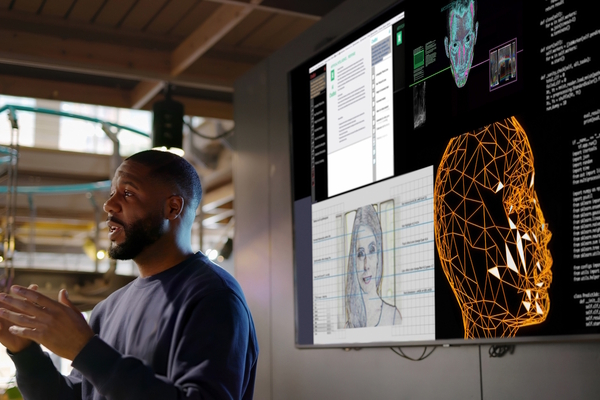Thriving in a multigenerational workplace

Graham James at Pluxee UK describes the importance of cultivating engagement and understanding by transcending our own generational preferences
Today’s workplaces are more diverse than ever, with four generations working side-by-side: Baby Boomers, Gen X, Millennials, and Gen Z. This dynamic presents both challenges and extraordinary opportunities.
As managers, it’s essential to recognise that we inevitably belong to one of these categories, whether it be Baby Boomers, Gen X, Millennials, or Gen Z. However, to develop an environment where everyone feels valued and motivated, we must transcend our own generational preferences.
Understanding the nuances of each generation and adopting a culture that celebrates this diversity is crucial. By doing so, we pave the way for a successful workplace that thrives in the long run.
Understanding the generational landscape
Leading a multigenerational workforce with diverse skills, experiences, and expectations presents an intricate blend of challenges and opportunities. The task at hand for managers involves recognising not only the potential for growth and innovation that stems from this cross-generational collaboration but also the complexities it introduces.
Differences in communication preferences, working styles, and attitudes toward technology can lead to misunderstandings and conflicts. Therefore, developing a nuanced employee strategy to successfully navigate these differences is essential.
The key to overcoming this lies in identifying and promoting shared interests that can unite diverse age groups, fostering a sense of belonging and unity in diversity.
Creating an inclusive culture is paramount. Managers play a crucial role in shaping environments that appeal to all generations, which involves not only encouraging bonding through inclusive social activities but also integrating the varied values of each generation into a cohesive company culture.
Recognising and honouring these distinctive values—from Baby Boomers’ emphasis on financial reward to Gen Z’s pursuit of flexibility and freedom— helps align them with the company’s overarching values, ensuring that each member feels valued and understood.
This also involves adapting communication styles. Different generations often have preferred mode of communication, ranging from in-person or instant messaging platforms like Slack and Teams. One method to avoid, however, is unsolicited phone calls, especially since research shows that a quarter (24 percent) of Gen Z refuse to take phone calls, and 37 percent find them awkward. Therefore, it’s important to communicate in a way that suits the team an in order to get the best out of them.
Lastly, combating negative stereotypes is critical in building a well-balanced workplace. Stereotypes, such as Millennials being labelled as impatient or Gen X being perceived as distant, can severely damage intergenerational relationships and affect business performance.
Every employee, from senior leadership to most junior workers, is responsible for actively challenging and dismantling these stereotypes, fostering a culture of mutual respect and understanding.
By encouraging interactions that allow different generations to learn from each other, organisations can pave the way for a more cohesive and collaborative workforce.
Investing in engagement across ages
Managers are tasked with the delicate job of forging employee engagement initiatives that resonate with the distinct values of each generation. Understanding an individual’s ambitions will also help shape the culture you are creating.
At its core, employee engagement is not just about loving your job but feeling connected to the company and adding value to its performance. Let’s take the Baby Boomer generation, who appreciate the acknowledgement of their extensive professional accomplishments. On the contrary, Millennials and Gen Zs may find more value in opportunities for career progression.
Therefore, a blanket strategy will not suffice. The crux of the matter lies in genuinely understanding the people behind the job role and embracing their values and beliefs. Managers must understand the individual needs and ambitions of every team member. Such understanding often starts with engagement strategies such as transparent conversations with staff, performance reviews or insightful employee surveys.
Career development also plays a crucial role in employee retention. It’s important for managers to actively support employee learning and development ambitions, focusing on increasing responsibilities and leadership skills.
Additionally, forward-thinking companies can implement reverse mentorship programmes, where younger employees share their insights and skills, creating a balanced learning environment and contributing to organisational decision-making.
In today’s rapidly changing world, managers need to be adaptable. They should seamlessly transition between roles such as advisor, coach, or mentor, depending on the diverse needs of their team. Open and honest communication is essential, allowing employees to raise concerns freely. By working collaboratively, managers can identify and remove obstacles, fostering a strong sense of camaraderie.
This involves establishing and communicating clear goals and expectations. Regularly reviewing well-defined team goals in group meetings is crucial for maintaining direction.
Being receptive to team feedback cultivates a culture of transparency and constructive communication. Regular, ongoing conversations are more effective than isolated, formal assessments.
While Millennials are often associated with a desire for frequent feedback, everyone benefits from understanding their performance and potential areas for improvement. Therefore, regular check-ins have become a powerful tool for continuous development and sustained engagement.
Moving beyond the trend
The multigenerational workforce is an enduring reality, not a passing fad.
Companies that move beyond generic engagement models and nurture an ecosystem where every generation can thrive and contribute will be best positioned for long-term success. As new generations enter the workforce, understanding and addressing their needs will be crucial.
With Baby Boomers retiring and Gen Z entering the workforce, companies must understand and address the evolving needs and aspirations of each generation. Building a future-proof multigenerational engagement strategy is no longer optional. It’s essential for long-term success in every workplace.
Graham James is a Director at Pluxee UK
Main image courtesy of iStockPhoto.com and sanjeri

Business Reporter Team
Most Viewed
Winston House, 3rd Floor, Units 306-309, 2-4 Dollis Park, London, N3 1HF
23-29 Hendon Lane, London, N3 1RT
020 8349 4363
© 2025, Lyonsdown Limited. Business Reporter® is a registered trademark of Lyonsdown Ltd. VAT registration number: 830519543





